Baymax - Developer Guide
Table of Contents
-
Introduction
-
Setting up
-
Design
3.1. Architecture
3.2. UI Component
3.3. Logic Component
3.4. Model Component
3.5. Storage Component
3.6. Common Classes
-
Implementation
4.1. List Managers
4.2. Patient Management Features
4.3. Appointment Management Features
4.4. Calendar Feature
-
Documentation
-
Testing
-
Dev Ops
Appendix A: Product Scope
Appendix B: User Stories
Appendix C: Use Cases
Appendix D: Non-functional Requirements
Appendix E: Glossary
Appendix F: Instructions for Manual Testing
1. Introduction
Baymax is a desktop appointment manager made for clinic receptionists. It focuses on the Command Line Interface (CLI) while providing users with a simple and intuitive Graphical User Interface (GUI). Thus, the main interaction with Baymax will be done through user text-based commands.
Baymax allows receptionists to keep track of patients and appointments in a single, integrated platform.
The purpose of this Developer Guide is to help you understand the design and implementation of Baymax, so that you can become a contributor to this project as well.
2. Setting up, getting started
Refer to the guide Setting up and getting started.
3. Design
In this section, you will learn about the general design and structure of the Baymax application. This section explains how each component in Baymax works individually. Baymax is created with the Object-Oriented Programming Paradigm in mind, and follows the Facade Pattern and Command Pattern in software design.
3.1 Architecture
The Architecture Diagram given above explains the high-level design of the App. Given below is a quick overview of each component.

Figure 1. Architecture Diagram of Baymax
.puml files used to create diagrams in this document can be found in the diagrams folder. Refer to the PlantUML Tutorial at se-edu/guides to learn how to create and edit diagrams.
The following table provides a quick overview of each component of Baymax. More details about each individual component can be found in the following subsections.
| Component | Description |
|---|---|
Main |
Has two classes called Main and MainApp. It is responsible for: 1. At App launch: Initializes the components in the correct sequence, and connects them up with each other. 2. At shut down: Shuts down the components and cleanup resources where necessary. |
Commons |
Represents a collection of classes used by multiple other components. It also contains the LogCenter component. The LogCenter component plays an important role at the architectural level and is used by many classes to write log messages to the App’s log file. |
UI |
Handles the UI of the App. |
Logic |
Executes commands. |
Model |
Holds the data of the App in memory. |
Storage |
Reads data from, and writes data to, the hard disk. |
Each of the four components,
- defines its API in an
interfacewith the same name as the Component. - exposes its functionality using a concrete
{Component Name}Managerclass (which implements the corresponding APIinterfacementioned in the previous point.
For example, the Logic component (see the class diagram given below) defines its API in the Logic.java interface and exposes its functionality using the LogicManager.java class which implements the Logic interface.

Figure 2. Class Diagram of the Logic Component
How the architecture components interact with each other
The Sequence Diagram below shows how the components interact with each other for the scenario where the user issues the command deletepatient 1.

Figure 3. Architecture Sequence Diagram
The sections below give more details of each component.
3.2. UI component
(Contributed by Li Jianhan)
This segment will explain the structure and responsibilities of the UI component.
3.2.1. Structure

Figure 4. Structure of the UI component
API :
Ui.java
The UI component uses JavaFx UI framework. The layout of these UI parts are defined in matching .fxml files that are in the src/main/resources/view folder.
The UI consists of a MainWindow that is made up of parts such as the CommandBox and SideTabPane as shown in the Class Diagram above. All these, including the MainWindow, inherit from the abstract UiPart class.
The SideTabPane class creates XYZPage corresponding to each tab in the GUI. Each tab will display information on different features of Baymax. The XYZPage is a generic name given to the following elements:
- Dashboard
- PatientInfoPage
- AppointmentInfoPage
- CalendarPage
- SchedulePage
- InfoPage
Each of these classes (except InfoPage) displays data from the Model to the user.
For example, The PatientInfoPage and AppointmentInfoPage display lists of patients and appointments respectively. Hence they contain XYZListPanel (shown in the diagram below), which in turn contains a collection of XYZCard that displays each data field in the Patient and Appointment class.

Figure 5. Structure of Generic XYZPage Class Diagram
3.2.2. Responsibilities
The UI component,
- Executes user commands using the
Logiccomponent. - Listens for changes to
Modeldata so that the UI can be updated with the modified data.
3.3. Logic component
(Contributed by Li Jianhan and Shi Hui Ling)
This segment will explain the structure and responsibilities of the Logic component.
3.3.1 Structure

Figure 6. Structure of the Logic Component
API :
Logic.java
-
Logicuses theAppointmentBookParserclass to parse the user command. -
AppointmentBookParsercreates a specificXYZCommandParserinstance to parse the arguments for theXYZcommand. - This results in a
Commandobject which is executed by theLogicManager. - The command execution can affect the
Model(e.g. adding an appointment, which is executed by theModelManager, calling onAppointmentManager). - The result of the command execution is encapsulated as a
CommandResultobject which is returned fromLogicManagerand passed back to theUi. - In addition, the
CommandResultobject can also instruct theUito perform certain actions, such as displaying help to the user and jumping to relevant tabs.
3.3.2 Responsibilities
The Logic component
- Parses user commands and arguments using
Parserclasses - Executes user commands using
Commandclasses – this changesModelas required for the command, saves any changes toStorage, and reflects changes toUito display.
Given below is the Sequence Diagram for interactions within the Logic component for the execute("cancel 1") API call to illustrate.
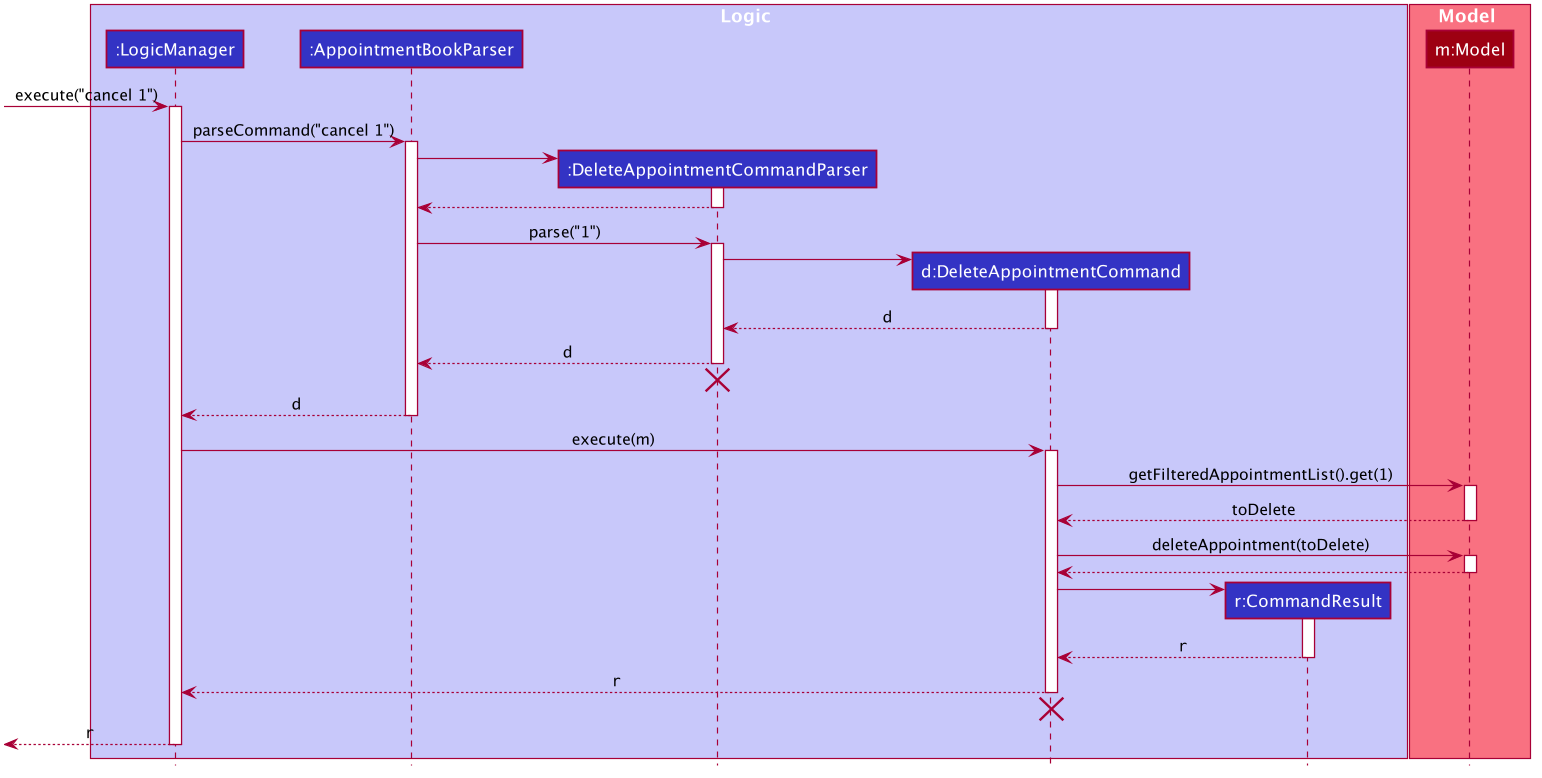
Figure 7. Delete Appointment Sequence Diagram
DeleteAppointmentCommandParser should end at the destroy marker (X) but due to a limitation of PlantUML, the lifeline reaches the end of diagram.
3.4. Model component
(Contributed by Kaitlyn Ng & Reuben Teng)
This segment will explain the structure and responsibilities of the Model component.
3.4.1. Structure

Figure 8. Structure of the Model Component
API : Model.java
The Model component contains ListManagers that handle two main types of data in Baymax, Patient and Appointment. Each type of data is handled by a separate ListManager (PatientManager and AppointmentManager). A ModelManager facade class then exposes the methods that enable other components to perform getting, setting, searching and editing functions on the different types of data.
Apart from ListManagers, the Model component also contains a CalendarManager that manages an AppointmentCalendar. The CalendarManager supports operations on the AppointmentCalendar such as getting and setting the year, month and day.
The Model component also contains
- a
UserPrefobject that represents the user’s preferences. - unmodifiable
ObservableListobjects for each type of data that can be ‘observed’ e.g. the UI can be bound to this list so that the UI automatically updates when the data in the list change.
The Model component does not depend on any of the other three components.
3.4.2. Responsibilities
The Model component,
- Stores different types of data in memory when Baymax is running
- Represents data in
ObservableListto automatically update the GUI when there is a change
3.5. Storage component
(Contributed by Kaitlyn Ng)
This segment will explain the structure and responsibilities of the Storage component.
3.5.1. Structure

Figure 9. Structure of the Storage Component
API : Storage.java
The Storage component contains interfaces for Patient data (PatientManagerStorage) and Appointment data (AppointmentManagerStorage) which defines methods for reading and saving the Model components to memory. This allows for multiple different implementations of storage to store the data in different formats, e.g. json, csv, plaintext. A facade class StorageManager is used to expose these reading and writing methods.
The JsonPatientManagerStorage and JsonAppointmentManagerStorage are specific implementations of PatientManagerStorage and AppointmentManagerStorage that saves the Patient and Appointment data to json files. The path to these files are obtained from the UserPref object. The following class diagram illustrates the implementation of a JsonPatientManagerStorage, and a similar architecture can be found for the storage of appointments in json format.
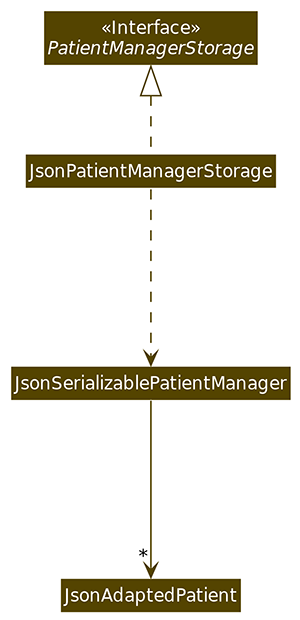
Figure 10. Structure of JsonPatientManagerStorage
3.5.2. Responsibilities
The Storage component,
- Saves
UserPrefobjects in json format. - Parses a json file in the correct format to get a
UserPrefobject. - Saves
PatientandAppointmentdata in json format. - Parses a json file in the correct format to get a
PatientManagerorAppointmentManagerobject.
3.6. Common Classes
Classes used by multiple components are in the team.baymax.commons package.
4. Implementation
This section describes some noteworthy details on how certain features are implemented.
4.1 List Managers
(Contributed by Kaitlyn Ng)
List Managers allow the Baymax application to handle lists of the different types of data in the application, namely Patient and Appointment. ListManager defines methods for Create, Read, Update and Delete (CRUD) operations that are common to all the types of data, and needed to manage the lists of data effectively.
4.1.1 Rationale
The separation of Patient and Appointment data into separate ListManagers allow for a common software architecture between data types. Lists of data within the application can thus be handled more efficiently, and other types of data can be added to extend the application with minimal modification to the code.
4.1.2. Current Implementation
Each ListManagercontains a UniqueList which is a generic class that stores all the data items in a list and maintains the uniqueness of the data objects in the list while doing so. This ensures that in every UniqueList, there is only one of each object. The UniqueList class is a generic class that can only contain data items that extend the UniqueListElement interface, which ensures data items contain the necessary comparison functions for UniqueList to maintain uniqueness.
Each ListManager implements the ReadOnlyListManager interface. This interface has the getReadOnlyList() method which returns an ObservableList of data items, to be monitored by the GUI.
An example of a the ListManager implementation is shown below using the PatientManager class, that manages a UniqueList of Patients. A similar structure is implemented for the AppointmentManager class, that manages a UniqueList of Appointments.
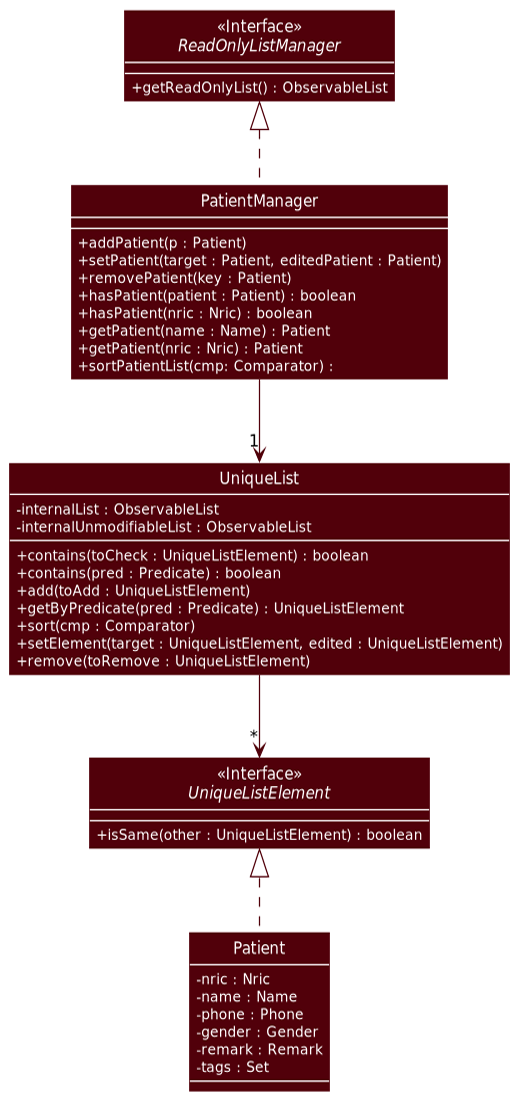
Figure 11. Structure of PatientManager
API : PatientManager.java
4.1.3. Design Consideration
Aspect: Separation into distinct list managers for each type of data.
| Pros | Cons | |
|---|---|---|
| Option 1 (Current Choice): Split into separate lists (Current) | Increases modularity of the code by separating it into distinct sections to handle data whose operations do not often require interaction between them. Allows for more straightforward implementations in other components by ensuring each data type is handled with the class architecture. |
A lot of boilerplate code for implementing the list managers as separate classes but with similar functionalities |
Option 2: Store all the information in a single DataManager
|
Easier to implement, as only one manager class is needed. | Violates the Separation of Concerns principle, making it difficult to implement future extensions without significant change to other components. |
Reason for choosing Option 1:
Sound design principles are key to ensuring that the program is bug-free, easily testable and easily extendable in the future. Option 1 increases modularity of the code to create more opportunities for module upgrade, reuse and independent development for each data type, limiting the amount of change needed to other components when there are changes in the Model. This will save time in the long run and reduce the possibility of introducing breaking bugs due to unnecessary dependencies between data types.
Aspect 2: Extract common CRUD operations with a generic class
| Pros | Cons | |
|---|---|---|
Option 1 (Current Choice): Extract common CRUD functionalities of the ListManagers into a single UniqueList class. The ListManagers will store data items in the UniqueList generic class and build on top of the generic CRUD operations from the class. |
Reduces amount of repeated code as all the lists of data essentially perform the same functions. | Generics can be harder to comprehend, thus making it harder for other programmers to understand and use the component. |
| Option 2: Do not extract any common functionalities | Easier for programmers to work on each code related to each data item completely separately, and implement methods specific to the data item in a more straightforward manner. | Violates the Don’t Repeat Yourself principle as there will be a lot of repeated CRUD operations. |
Reason for choosing Option 1:
Following the Don’t Repeat Yourself design principle will allow for more abstraction and less duplication in the code, which facilitates future extensions and reduce effort in maintenance and testing by reducing repeated code.
4.2. Patient Management Features
(Contributed by Thuta Htun Wai)
Baymax allows the user to manage patient information. A user can only deal with a single patient at any time. i.e. Only a single patient’s information can be managed at one time. A user can:
- Add a new patient
- Delete an existing patient
- Edit a patient’s details
- Add a remark to a patient
- List all the patients in the system
- Find a patient by using a keyword from his/her name
4.2.1. Rationale
The Patient Management Features are included in Baymax because it is one of the core features of the application. If the user wants to keep track of the patient’s information, he/she has to record the details of the patient and be able to look up a patient in the system easily.
The class PatientManager is the “central” of patient management. It maintains a UniqueList of all Patients in the app, and executes the logic of most patient commands. The PatientManager class contains a summary of all the “back-end” logic of patient commands on the app’s UniqueList of Patients. This follows the SRP, as everything related to the execution of patient commands can be found here. This also forces the customising of code to fit exactly the purposes needed for patient commands, even if the methods simply call a UniqueList method that fulfills the exact purpose.
4.2.2. Current Implementation
The patient package in the Model component contains the necessary information related to a patient. The current implementation of the Patient Management Features allows the user to keep track of a list of patients in the appointment book.
PatientManager contains the methods necessary to operate on the UniqueList of Patients. These include:
- Adding a patient
- Editing a patient
- Deleting a patient
- Finding a specific patient by any
Predicate, e.g. name contains a search keyword - Sorting the list of patients
These methods are used by the PatientCommand classes to execute their logic.
In this section, we will outline the findpatient command from the Patient Management Features which is summarised by the Activity Diagram in Figure 12 below.
The parameters of the findpatient command are keywords in the patient’s name that the user wants to search for.
E.g. findpatient alex will search and list all patients whose name has the word alex.
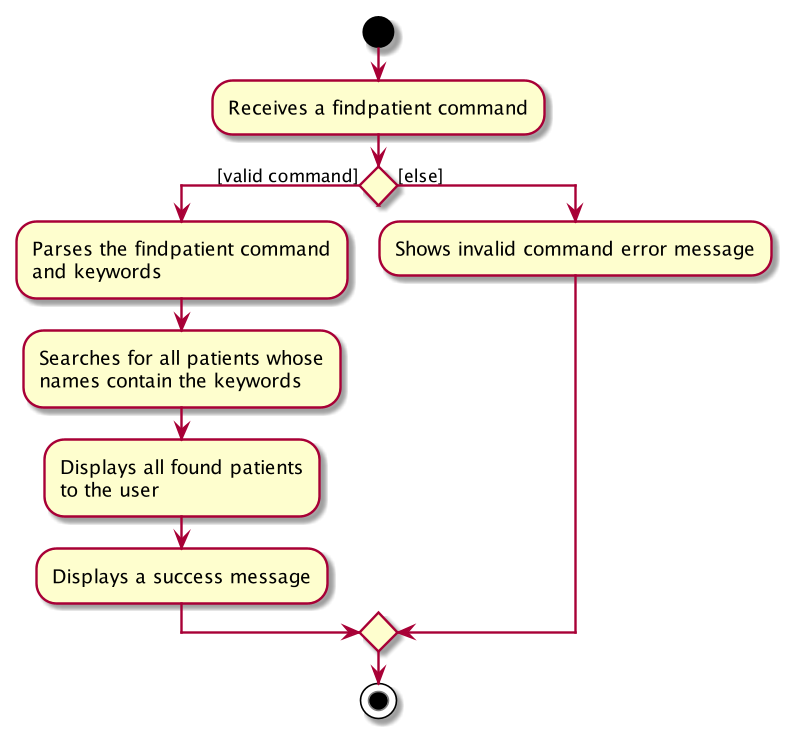
Figure 12. Workflow of a findpatient command
When the user enters the findpatient command to search for a patient, the user input command undergoes the same command parsing as described in Section 3.3, “Logic component”. During the parsing, a predicate is created. This predicate checks if a given Patient contains the user input keywords. The FindPatientCommand will then receive this predicate when it is created.
The following steps will describe the execution of the FindPatientCommand in detail, assuming that no error is encountered.
- When the
execute()method of theFindActivityCommandis called, theModelManager’supdateFilteredPatientList()method is called. - The
ModelManagerthen proceeds to call thesetPredicate()method of theFilteredList<Patient>. - The
FilteredList<Patient>will then update its filtered list of patients to contain only patients that fulfil the given predicate. - The Ui component will detect this change and update the GUI.
- If the above steps are all successful, the
FindPatientCommandwill then create a CommandResult object and return the result.
The Sequence Diagram below summarises the aforementioned steps.
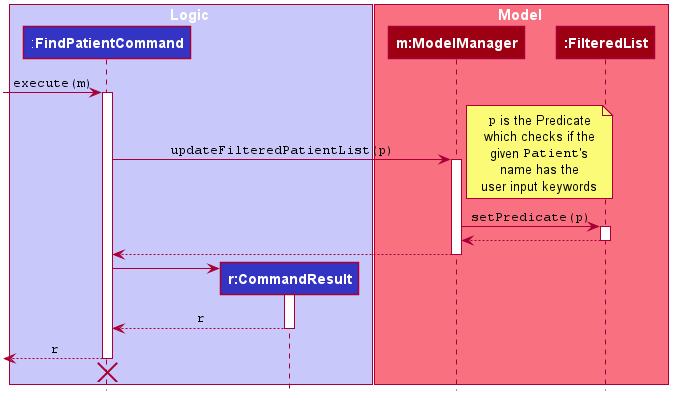
Figure 13. Execution of the FindPatientCommand
Note:
- The lifeline for the
FindPatientCommandshould end at the destroy mark (X). However, due to a limitation of PlantUML, the lifeline reaches the end of the diagram. - This sequence diagram does not take into consideration the possible exceptions which might occur during the
FindPatientCommandexecution.
The following table shows the commands related to managing a patient’s details.
| Command | Purpose |
|---|---|
addpatient |
Adds a new patient. |
deletepatient |
Deletes a patient. |
listpatients |
Lists all patients. |
editpatient |
Edits a patient’s details. |
findpatient |
Finds a patient with the given keyword in his/her name. |
remark |
Adds/Edits the remark of a patient. |
4.2.3. Design Considerations
Aspect: Find matching names using substrings (E.g. ale) vs using exact words (E.g. alex)
| Pros | Cons | |
|---|---|---|
| Option 1 (Current Choice): Match by substring | Shorter keywords to type, therefore increases user typing speed. | Lower accuracy. The filtered list is longer and takes longer time to find the patient you are looking for. |
| Option 2: Match by the exact word | Higher accuracy. | Longer names are harder for the user to find the exact match. It is also difficult for the user to remember and type out the exact keyword. |
Reason for choosing Option 1:
- Option 1 is more flexible for the user. If the user wants higher accuracy, he/she can type longer keywords to filter out more patients.
Aspect: Whether the Patient class should contain a list of Appointments
| Pros | Cons | |
|---|---|---|
Option 1 (Current Choice): Patient class does not contain a list of Appointments. |
Avoids cyclic dependency since the Appointment class already contains a Patient. Reduces overhead from having to update 2 lists (1 from ModelManager and 1 from the Patient class) . |
More tedious to find a list of appointments belonging to a specific patient and there is more overhead from having to filter the appointment list by a predicate. |
| Option 2: Patient class will contain a list of Appointments. | A list of appointment belonging to a specific patient can be directly retrieved from the patient object which is faster than having the extra step to filter the list. | Cyclic dependency is present. (Patient and Appointment depend on each other). Whenever any update is made to the list of appointments, such as adding a new appointment or editing an appointment, extra overhead is incurred from processing both the lists inside the ModelManager and the Patient class. |
Reason for choosing Option 1:
-
Option 1 follows good coding principles by avoiding cyclic dependency.
-
When the list of appointments increase in size, Option 1 performs better because Baymax involves a lot of “update/set” operations such as marking an appointment as done/missed and adding/editing an appointment.
4.3 Appointment Management Features
(Contributed by Shi Hui Ling & Reuben Teng)
Baymax allows the user to manage appointment information. A user can:
- Add a new appointment
- Delete an existing appointment
- Edit an appointment’s details
- List all the appointments belonging to a patient
- List all appointments
- Find all appointments containing a keyword in their remark or tags
- Mark an appointment as missed
- Mark an appointment as done
4.3.1 Rationale
Scheduling, editing, viewing, and otherwise dealing with appointments is a key feature area for Baymax.
The class AppointmentManager is the “central” of appointment management. It maintains a UniqueList of all Appointments in the app, and executes the logic of most appointment commands. The AppointmentManager class contains a summary of all the “back-end” logic of appointment commands on the app’s UniqueList of Appointments. This follows the SRP, as everything related to the execution of appointment commands can be found here. This also forces the customising of code to fit exactly the purposes needed for appointment commands, even if the methods simply call a UniqueList method that fulfills the exact purpose.
4.3.2. Current Implementation
The appointment package in the Model component contains the necessary information related to a patient. The current implementation of the Patient Management Features allows the user to keep track of a list of patients in the appointment book.
AppointmentManager contains the methods necessary to operate on the UniqueList of Appointments. These include:
- Adding an appointment
- Editing an appointment
- Deleting an appointment
- Finding a specific appointment by any
Predicate, e.g. sameDateTimeandPatient - Sorting the list of appointments
These methods are used by the AppointmentCommand classes to execute their logic.
The Object Diagram below summarises the interactions between AppointmentManager and Appointments.
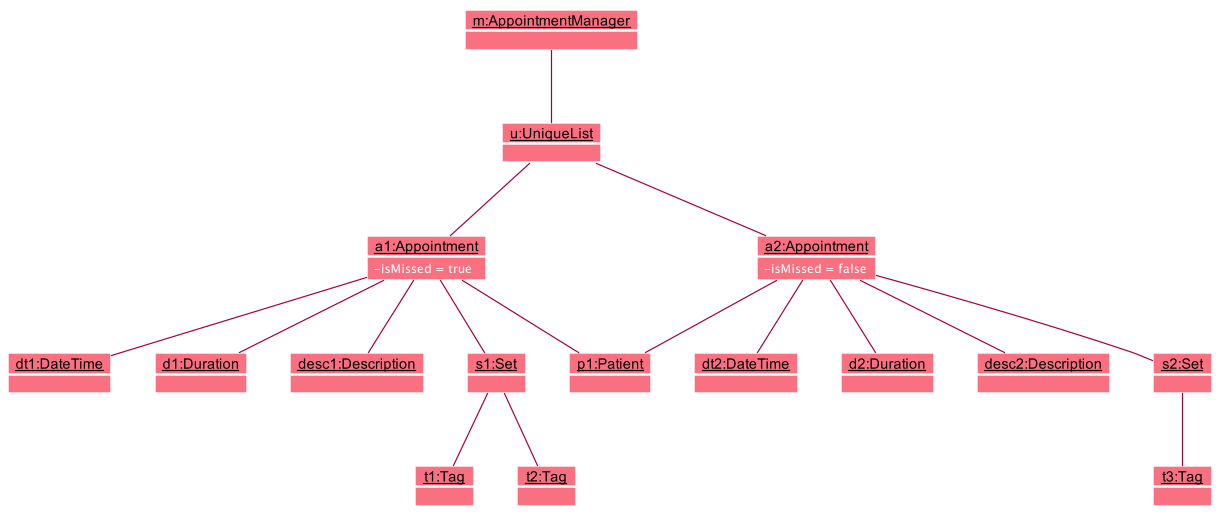
Figure 14. Object diagram of AppointmentManager
When the user enters a Command, the input undergoes the same parsing and execution as described in Section 3.3, “Logic component”. Refer to Figure 7 in Section 3.3.2. “Responsibilities of the Logic component” for an example of how an Appointment command is executed. In general, Appointment commands have a similar workflow to Patient commands (detailed in Section 4.1.2 Patient Manager Current Implementation).
The following table shows the commands related to managing an appointment’s details.
| Command | Purpose |
|---|---|
addappt |
Adds a new appointment. |
cancel |
Deletes an appointment. |
listappts |
Lists all appointments. |
listapptsof |
Lists all appointments belonging to a patient of the given index, nric, or name. |
editappt |
Edits an appointment’s details. |
findappt |
Finds an appointment with the given keyword in its description or tag(s). |
done |
Marks an appointment as DONE. |
missed |
Marks an appointment as MISSED. |
4.3.3. Design Consideration
Aspect 1: Marking of Appointment status attribute
Automated the marking of an Appointment as DONE after the deadline has passed, and giving receptionists the ability to mark Appointments as missed or done (if accidentally marked as missed).
| Pros | Cons | |
|---|---|---|
Option 1: Periodically check the Datetime of an Appointment that is still marked UPCOMING against the current Datetime, marking it as DONE if the current Datetime is after that of the Appointment . |
Keeps stored data perpetually up-to-date. | Constant comparision become computationally intensive when there are many UPCOMING appointments. |
Option 2 (Current Choice): Check Datetime of Appointment against current Datetime only when getStatus() method is called. |
Computation is performed when the value of status is needed, resulting in reduced computational cost. |
Architecture becomes less intuitive as status is no longer stored. |
Reason for choosing Option 2:
While the architecture might become less intuitive, computing status only when needed is much more efficient.
Aspect 2: Backdated Appointments
To provide flexibility for users, Appointments before the current Datetime can be added to Baymax. They are marked as DONE automatically, but receptionist will be able to change the status to MISSED as well.
Such appointments are marked DONE automatically as it is assumed that it is unlikely for receptionists to have to keep track of appointments a patient has missed, and hence it is unlikely for missed appointments to be backdated.
Aspect 3: listapptsof Command
Implementation of obtaining patient from name supplied:
| Pros | Cons | |
|---|---|---|
| Option 1: (Current choice): Require matching of full name | Much less likely to only have one Patient of that name. As we only want to display the appointments of one Patient, this is important. | Longer for user to type. |
| Option 2: Matching via keyword (i.e. name only has to contain the search string) | More user-friendly. | Much more likely to end up with appointments of multiple patients. For example, matching of keywords like “Alex Yeoh” will return appointments belonging to all Patients with “Alex” as well as with “Yeoh” in their names, which is most likely not what users want. |
Reason for choosing Option 1:
Users are more likely to want a list of appointments of a single patient whose name matches their search, as appointments mixed from multiple patients can be confusing. As such, we will sacrifice a bit of user-friendliness for accuracy.
Aspect 4: cancel Command
For this command, we only require matching of DateTime and Patient of appointment as no two appointments should have those two fields exactly the same. By reducing the number of arguments needed for the command, we make the command more succinct and easy to use for receptionists. It is also easier implementation-wise.
4.4 Calendar Feature
(Contributed by Li Jianhan & Kaitlyn Ng)
Baymax allows the user to manage appointments using a built-in calendar. The calendar brings greater convenience to the user by showing them what days are available in a month. It is also coupled with a schedule view that can be accessed by entering the day command, which shows the user all appointments on the chosen day, laid out chronologically on a timeline.
4.4.1 Rationale
The Calendar feature is included in Baymax because it offers greater convenience in terms of viewing and adding appointments. The calendar view and schedule view offer a quick Month and Day overview of all the appointments respectively, such that the user can quickly tell at a glance which days or timings are booked and which are free.
The Calendar feature also helps to shorten commands by allowing the user to only specify the time of appointments, as the date can be inferred from the calendar. For example, in the Calendar Manager, a user can set a custom year, month and day. This influences the execution of the addappt command shown in the sequence diagram below. In this example, suppose the user has set year to 2020, month to February and day to 1, he can directly enter an addappt command that adds an appointment to 1, February, 2020 without having to enter a date into the command fields. This makes the command shorter, more convenient and more user-friendly.
Below is an example of the sequence diagram when the user executes an AddAppointment command without specifying a date. The diagram illustrates how the CalendarManager is used to automatically set the date of the appointment.
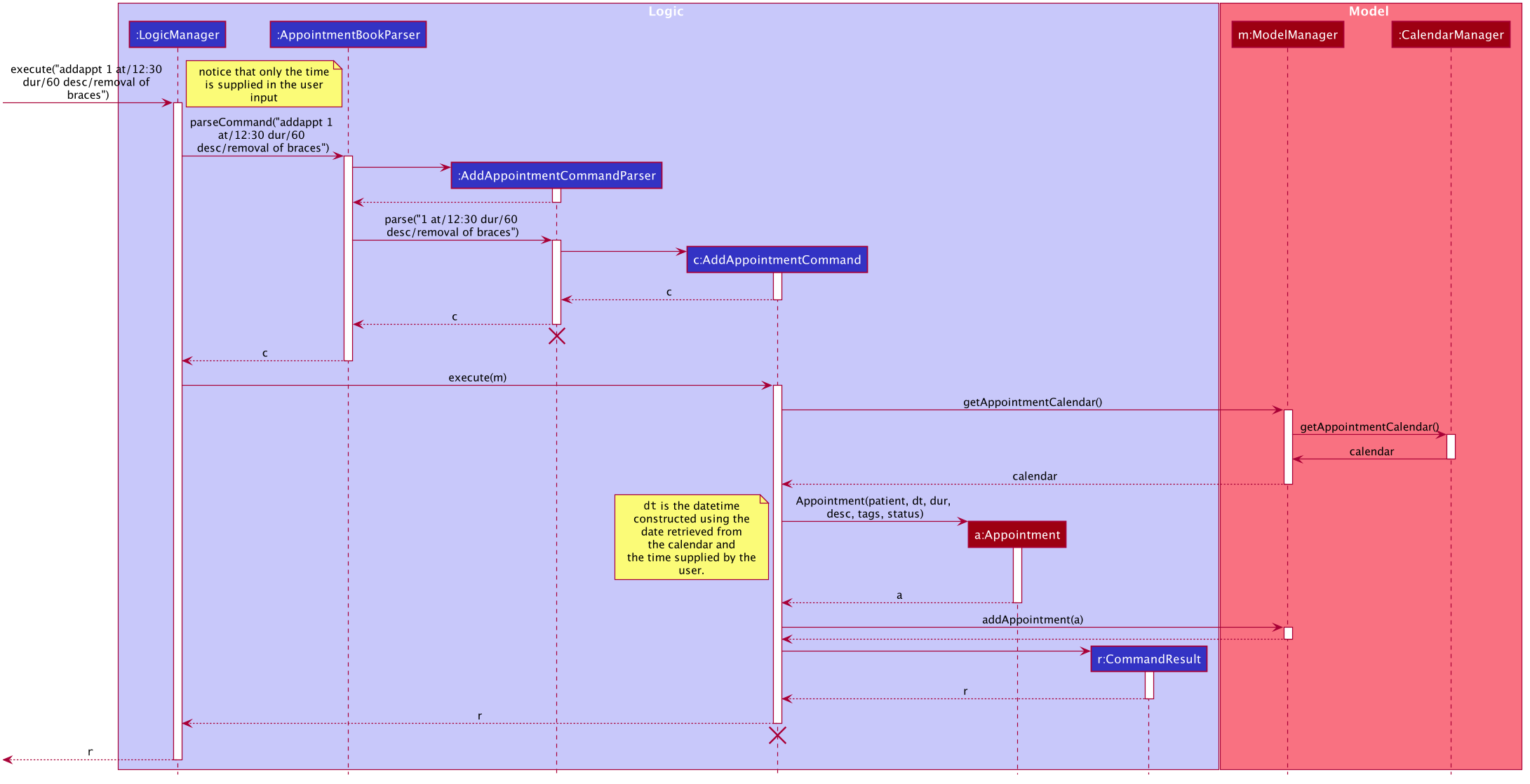
Figure 15. Add Appointment Sequence Diagram involving the CalendarManager
Note:
- The lifeline for the
AddAppointmentCommandParserandAddAppointmentCommandshould end at the destroy mark (X). However, due to a limitation of PlantUML, the lifeline reaches the end of the diagram.
4.4.2. Current Implementation
The CalendarManager class in the Model component contains an AppointmentCalendar object, storing the currently set year, month and day. Note that the Year, Month and Day attributes may not necessarily be storing the present year, month and day. When a user sets the year, month and day, the Logic Component parses the user input and constructs a YearCommand, MonthCommand and DayCommand respectively. Upon execution, the ModelManager calls upon the CalendarManager to update the Year, Month and Day within the AppointmentCalendar.
The following sequence diagram illustrates how the Logic component interacts with the ModelManager to influence the Year in the AppointmentCalendar managed by the CalendarManager.
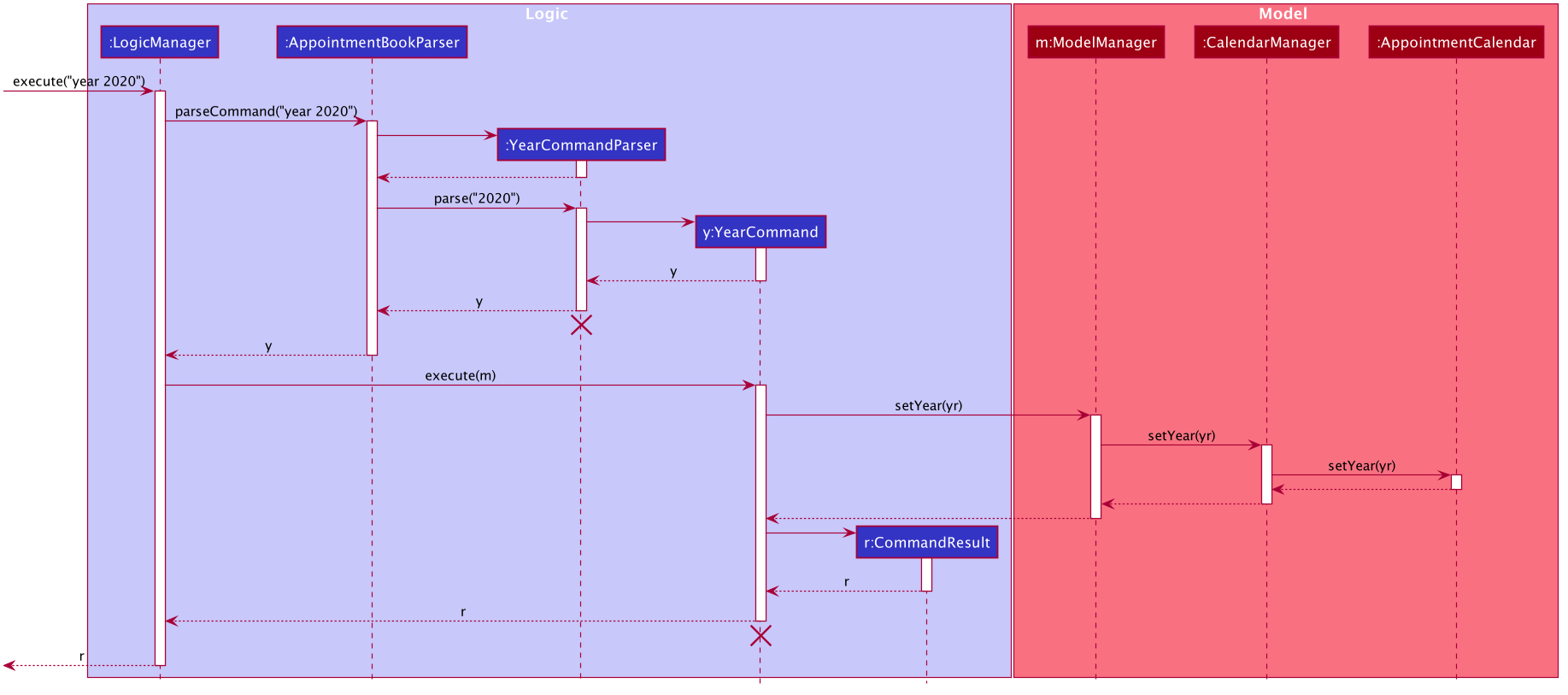
Figure 16. Switch Year Sequence Diagram
Note:
- The lifeline for the
YearCommandParserandYearCommandshould end at the destroy mark (X). However, due to a limitation of PlantUML, the lifeline reaches the end of the diagram.
4.4.3. Design Consideration
Aspect: The necessity of an AppointmentCalendar class in the model
| Pros | Cons | |
|---|---|---|
| Option 1 (Current Choice): New AppointmentCalendar class in the model to store the day, month, year | Allows for greater modularity. Whenever the Logic component requests for the day/month/year, the ModelManager can directly pass it a single AppointmentCalendar object, making it more extensible at it does not overcomplicate the CalendarManager class. By hiding the year, month and day in the AppointmentCalendar class, it adheres to the OOP principle of Encapsulation, as the CalendarManager only needs to be aware of the AppointmentCalendar object and not what it contains. |
Harder to implement (a new class is needed). |
| Option 2: Store the day, month and year directly inside the CalendarManager | Simpler to implement. | More cumbersome to pass around three objects (Year, Month and Day) compared to a single AppointmentCalendar object. If more features were to be implemented in the CalendarManager, it will quickly clutter up the CalendarManager class. |
Reason for choosing Option 1:
-
Option 1 follows good coding principles by adhering to the principle of encapsulation.
-
As two UI views (
ScheduleViewandCalendarView) depend on theAppointmentCalendar, abstracting the contents of the Calendar out into anAppointmentCalendarclass that is managed by theCalendarManagermakes more intuitive sense, as the UI views can now just observe for changes to theAppointmentCalendarby the manager and update the views accordingly.
5. Documentation
6. Testing
- Testing guide
-
Logging guide
7. Dev Ops
- DevOps guide
Appendix A: Product scope
(Contributed by Thuta Htun Wai)
Target user profile:
- needs to manage significant number of patients and appointments
- wants to keep track of patients and appointments efficiently
- wants to look up patients and/or appointments easily by using matching words
- wants to look at current and past appointments through a calendar view
- prefers desktop apps over other types
- can type fast
- prefers typing to mouse interactions
- is reasonably comfortable using CLI apps
Value proposition:
- A handy tool for clinic staff, especially the receptionists, to deal with a large amount of patient information and their appointments.
- Baymax can manage patient information and appointments better than a typical mouse driven medical appointment management app.
Appendix B: User stories
(Contributed by Kaitlyn Ng)
Priorities: High (must have) - * * *, Medium (nice to have) - * *, Low (unlikely to have) - *
| Priority | As a … | I want to … | So that I can… |
|---|---|---|---|
* * * |
forgetful receptionist of a clinic | display all available commands | refer to the list of commands when I forget them |
* * * |
receptionist of a clinic | add a new patient | |
* * * |
receptionist of a clinic | list out all patients | |
* * * |
receptionist of a clinic | update a patient’s contact information after they change it | contact them if needed |
* * * |
receptionist of a clinic | find a patient by their name | easily view their information when needed |
* * * |
receptionist of a clinic | delete a patient | remove accidentally-added patients |
* * * |
receptionist of a clinic | add an appointment for a patient | |
* * * |
receptionist of a clinic | list all appointments of a patient | track patient’s medical progress, check how long ago the patient’s previous appointment was, check for future appointments etc. |
* * * |
receptionist of a clinic | delete an existing appointment | remove cancelled appointments |
* * * |
receptionist of a clinic | list all the appointments of the clinic | have a detailed view of all the appointments in any period I want to look at |
* * |
receptionist of a clinic | mark an appointment as missed | keep track of which appointments did not occur due to various circumstances, and possibly arrange for other appointments in its place |
* * |
receptionist of a busy clinic | display an overview of the availability status of each day in a month | quickly advise patients on when they can book an appointment |
* * |
receptionist of a clinic with busy patients | change an appointment’s date and time | accommodate for last-minute changes in the patient’s schedule |
* * |
receptionist of a clinic using the app for the first time | clear all current patient data | get rid of sample/experimental data I used for exploring the app |
* * |
receptionist of a clinic | view the schedule for a particular day | check the availability of the clinic on that day to arrange for other appointments, or to check what time the appointments for the current day are |
* * |
careless receptionist in the clinic | backdate an appointment | add in appointments that I accidentally missed out |
* |
receptionist of a clinic using the app for the first time | see sample data in the app | visualise how the app looks like when it is in use and interact with existing data |
* |
receptionist of a clinic | display the coming appointments in the next n days | gauge the business of the clinic in the next few days |
* |
receptionist of a patient-centric clinic | add preferred but currently unavailable slots for patient’s appointments | give patients their more preferred slot if it becomes available |
* |
careless receptionist in the clinic | undo whatever I just did | correct accidental changes (especially deletions) |
Appendix C: Use cases
(Contributed by Li Jianhan and Shi Hui Ling)
For all use cases below, unless specified otherwise,
- System: Baymax
- Actor: User (Clinic Receptionist)
Patient Profile Management
Use case 1: Add a patient
MSS
- User requests to add a patient
- Baymax adds the patient
- Baymax displays a success message with details of the patient added
-
Baymax saves the changes
Use case ends.
Extensions
- 1a. Missing information for a field, e.g. Nric, Phone
- 1a1. Baymax displays an invalid command message that details all the fields needed for the command Use case ends.
Use case 2: Edit a patient’s information
MSS
- User requests to edit a patient
- Baymax edits the patient’s information
- Baymax displays the edited patient with details
-
Baymax saves the changes
Use case ends.
Extensions
- 1a. Patient does not exist
- 1a1. Baymax displays an invalid input message Use case ends.
- 1b. No fields specified for editing
- 1b1. Baymax displays an “at least one field must be specified” invalid input message Use case ends.
Use case 3: Delete a patient
MSS
- User requests to delete a patient
- Baymax deletes the patient
- Baymax displays success message with details of patient deleted
-
Baymax saves the changes
Use case ends.
Extensions
- 1a. Patient does not exist
- 1a1. Baymax displays an invalid input message Use case ends.
Use case 4: Find patient(s) by name
MSS
- User requests to find patient by name
- Baymax finds all patients that contain the search string in their name
-
Baymax displays a success message of how many matching patients are found (may be zero) and a list of all these patients with their details
Use case ends.
Use case 5: List all patients
MSS
- User requests to list all patients to view
-
Baymax displays a success message and a list of all patients in the system
Use case ends.
Appointment Management
Use case 6: Add an appointment
MSS
- User requests to add an appointment to a patient
- Baymax adds the appointment
- Baymax displays a success message with details of the appointment added
-
Baymax saves the changes
Use case ends.
Extensions
- 1a. Patient does not exist
- 1a1. Baymax displays an invalid input message Use case ends.
- 1b. Missing information for a field, e.g. Duration, Description
- 1b1. Baymax displays an invalid command message that details the fields needed for the command Use case ends.
Use case 7: List all appointments of a patient
MSS
- User requests to list all appointments of a particular patient
-
Baymax displays a success message and filters the display list to show all appointments of the patient
Use case ends.
Extensions
- 1a. Patient specified does not exist
- 1a1. Baymax displays an invalid input message specific to how the patient was specified (by Name, Nric, or Index in the list)
Use case ends.
Use case 8: Mark an appointment as missed
MSS
- User requests to mark a certain appointment as missed
- Baymax displays a success message and filters the display list to show only the appointment that has just been marked as missed
-
Baymax saves the changes
Use case ends.
Extensions
- 1a. Appointment specified does not exist
- 1a1. Baymax displays an invalid input message
Use case ends.
Use case 9: Mark an appointment as done
Similar to Use case 8: Mark an appointment as missed except there is a precondition.
Precondition: Appointment has already past (i.e. the date and time is past current date and time).
Use case 10: Edit an appointment
Similar to Use case 2: Edit a patient's information except for an appointment instead of a patient
Use case 11: Cancel an appointment
Similar to Use case 3: Delete a patient except for an appointment instead of a patient
Use case 12: Find appointment(s) by keyword
Similar to Use case 4: Find patient(s) by name except Baymax finds all appointments that contain
the search string in their remark or tags.
Use case 13: List all appointments
Similar to Use case 5: List all patients except for appointments instead of patients.
Calendar
Use case 14: View appointment schedule on a particular day
MSS
- User requests to view the calendar of a particular year
- Baymax calendar switches to the stipulated year
- User requests to view the calendar of a particular month
- Baymax calendar switches to the stipulated month in the given year
- User requests to view the calendar of a particular day
-
Baymax switches to a schedule / timetable view of all the appointments on the given day
Use case ends.
Extensions
- 1a. Year specified is beyond the limits allowed by Baymax
- 1a1. Baymax displays an invalid input message specifying the allowed input
Use case ends.
- 3a. Month specified is not a valid month (e.g. 13)
- 3a1. Baymax displays an invalid input message specifying the allowed input
Use case ends.
- 5a. Day specified is not a valid day in the month (e.g. 30 when in February)
- 5a1. Baymax displays an invalid input message specifying the allowed input
Use case ends.
Appendix D: Non-Functional Requirements
(Contributed by Shi Hui Ling)
Technical Environment
- Application should work on any mainstream OS as long as it has Java 11 or above installed.
- Application should work without requiring an installer.
- Application should not depend on a remote server or other remote resources.
- Application should work without an online connection.
- Application should work on both 32-bit and 64-bit environments.
Performance
- Application should be able to save and load 200 patients’ worth of data without any noticeable delay in performance.
- Application should respond within 2 seconds to all commands.
Quality
- A user with above-average typing speed for regular English text should be able to accomplish most of the tasks faster by typing commands than using the mouse.
- Application should be easy to use for a new user when following the User Guide or
helpinstructions. - Application should have a user-friendly graphical user interface and display.
Data
- Application data should load correctly on any mainstream OS given the data file is transferred properly.
- Application data should never be lost or removed except when user explicitly deletes something.
Project Scope
- Application is not required to handle detailed medical information about patients.
- Application is not required to handle the printing of patient profiles or saving them in a user-friendly manner (only displaying).
- Application is not required to handle multiple users.
Process
- The project is expected to adhere to a schedule that delivers a feature set every two weeks.
Extensibility & Documentation
- Application should be easily extended by developers looking to improve or expand it.
- Application should be well-documented such that new developers can be on-boarded quickly just by reading through documentation.
Appendix E: Glossary
(Contributed by Reuben Teng)
UI
- Abbreviation for User Interface, representing the point of human-computer interaction and communication.
API
- Abbreviation for Application Programming Interface. It defines interactions between multiple software intermediaries.
OOP
- Abbreviation Object-Oriented Programming, in which programmers organise software design around data (objects), rather than functions and logic.
CLI
- Abbreviation for Command Line Interface, referring to an interface which accepts user inputs and commands in the form of text.
MSS
- Abbreviation for Main Success Scenario, describing the most straightforward interaction for a given use case, which assumes that nothing goes wrong.
OS
- Abbreviation Operating System, referring to mainstream Operating Systems Windows, Linux, OS-X.
json
- Short for JavaScript Object Notation, referring to a memory-cheap format for storing and transporting data.
csv
- Abbreviation for Comma-Separated Values, referring to a plain text file with a list of data, which each value within the data separated by a comma.
Private contact detail
- A contact detail that is not meant to be shared with others.
Boilerplate code
- Code that is reused without significant changes. Usually a sign of poor coding practices.
Separation of Concerns Principle
- Software engineering principle of separating code into different sections, with each section handling a different concern. This allows for a more modular approach to implementation, with changes to one section not affecting another.
Single Responsibility Principle (SRC)
- Software engineering principle of modularising code that states every module, class or function in a program should encapsulate and have responsibility over only one single part of the program’s functionality, i.e. have only “one reason to change”.
UniqueList
- A class inherited from addressbook-3 that maintains a JavaFX
ObservableListwhile enforcing uniqueness between its elements and ensuring no nulls. Also supports a limited set of operations.
JavaFX
- A standard GUI library for Java with graphics and media packages, used to create Java GUI applications.
Generics
- Generic classes, interfaces and methods are used to allow programmers to perform similar operations on multiple data types.
Appendix F: Instructions for manual testing
(Contributed by Kaitlyn Ng and Li Jianhan)
Given below are instructions to test the app manually.
F.1. Launch and shutdown
-
Initial launch
-
Download the jar file and copy into an empty folder
-
Double-click the jar file Expected: Shows the GUI with a set of sample contacts. The window size may not be optimum.
-
-
Saving window preferences
-
Resize the window to an optimum size. Move the window to a different location. Close the window.
-
Re-launch the app by double-clicking the jar file.
Expected: The most recent window size and location is retained.
-
F.2. Adding Data
F.2.1. Adding Patient
- Add a new patient to Baymax
- Prerequisites: Arguments are valid and compulsory parameters are provided. The Patient added must not be a duplicate of existing Patient.
- Test case:
addpatient nric/S9771234F name/John Doe phone/98765432 gender/M tag/asthmatic tag/LTP
Expected: Adds a patient with the nameJohn Doe, NRICS9771234F, phone number98765432, genderM(for male) and tags ofasthmaticandLTP. - Test case:
addpatient name/Bob Tan
Expected: No patient is added. Error details shown in feedback display. - Other incorrect commands to try:
addpatient nric/S9765436F,addpatient phone/123,addpatient tag/test
Expected: Similar to previous test case.
F.2.1. Adding Appointment
- Add a new appointment to Baymax
- Prerequisites: Arguments are valid and compulsory parameters are provided. The Appointment added must not be the same as existing Appointment.
- Test case:
addappt 1 on/20-11-2020 12:30 dur/60 desc/Monthly health checkup tag/Xray
Expected: Adds an appointment to the first patient in the displayed list of patients with datetime of20-11-2020 12:30, duration of60minutes, descriptionMonthly health checkupand tagXray. - Test case:
addappt desc/health checkup
Expected: No appointment is added. Error details shown in feedback display. - Other incorrect commands to try:
addappt duration/60,addappt on/2020-11-12 10:00,addappt tag/test
Expected: Similar to previous test case.
F.3. Editing Data
F.3.1. Editing Patient
- Edits a current Patient in Baymax
- Prerequisites: Arguments are valid, compulsory parameters are provided and patient must exist in the patient list. The Patient edited must not have the same NRIC as another patient. Multiple patients in the list.
- Test case:
editpatient 1 phone/91017265
Expected: Edits the phone number of the first patient in the displayed patient list to91017265. - Test case:
editpatient 1
Expected: No patient is edited. Error details shown in feedback display. - Other incorrect commands to try:
editpatient 1 name/@#James,editpatient 1 phone/12,editpatient 1 gender/mal
Expected: No Patient is edited. Error details shown in feedback display.
F.3.2 Editing Appointment
- Edits a current Appointment in Baymax
- Prerequisites: Arguments are valid, compulsory parameters are provided and appointment must exist in the appointment list. The datetime of the Appointment edited must not collide with the datetime of another appointment belonging to the same patient. Multiple appointments in the list.
- Test case:
editappt 1 on/16-11-2020 11:00 dur/45
Expected: Edits the first appointment in the displayed appointment list with datetime16-11-2020 11:00and duration of45minutes. - Other incorrect commands to try:
editappt 1 on/2020-10-10,editappt 1 dur/1600
F.4. Deleting Data
F.4.1. Deleting Patient
- Deleting a patient while all patients are being shown
- Prerequisites: List all patients using the
listpatientscommand. Multiple patients in the list. - Test case:
deletepatient 1
Expected: First patient is deleted from the list. Details of the deleted patient shown in the status message. - Test case:
deletepatient 0
Expected: No patient is deleted. Error details shown in the status message. - Other incorrect delete commands to try:
deletepatient,deletepatient x,...(where x is larger than the list size)
Expected: Similar to previous.
- Prerequisites: List all patients using the
F.4.2. Deleting Appointment
- Deleting an appointment while all appointments are being shown
- Prerequisites: List all appointments using the
listapptscommand. Multiple appointments in the list. - Test case:
cancel 1
Expected: First appointment is deleted from the list. Details of the deleted appointment shown in the status message. - Test case:
cancel 0
Expected: No appointment is deleted. Error details shown in the status message. - Other incorrect delete commands to try:
cancel,cancel x,...(where x is larger than the list size)
Expected: Similar to previous.
- Prerequisites: List all appointments using the
F.5. Saving data
F.5.1. Saving Patient Data
- Ensuring that patient data is saved when application is closed and re-opened
- Prerequisites: Perform one of the tests for adding, deleting or editing patient data above.
- Close the application. Open the application again. Expected: Patients listed in the application should be updated to reflect the latest change made.
F.5.2. Saving Appointment Data
- Ensuring that appointment data is saved when application is closed and re-opened
- Prerequisites: Perform one of the tests for adding, deleting or editing appointment data above.
- Close the application. Open the application again. Expected: Appointments listed in the application should be updated to reflect the latest change made.
F.5.3. Dealing with missing/corrupted data
- Ensure that the application is able to function normally even with missing or corrupted data files
- Test case: Delete
patients.jsonandappointments.jsonfiles in the Baymax application in/datafolder. Start up the application as usual. Expected: Baymax application is populated with sample data. - Test case: Open
patients.jsonorappointments.jsonand corrupt the file by adding gibberish text or deleting part of the file to destroy the json formatting. Expected: Baymax application is populated with sample data.
- Test case: Delete